Prasanna Sattigeri
Adversarial Prompt Evaluation: Systematic Benchmarking of Guardrails Against Prompt Input Attacks on LLMs
Feb 21, 2025Abstract:As large language models (LLMs) become integrated into everyday applications, ensuring their robustness and security is increasingly critical. In particular, LLMs can be manipulated into unsafe behaviour by prompts known as jailbreaks. The variety of jailbreak styles is growing, necessitating the use of external defences known as guardrails. While many jailbreak defences have been proposed, not all defences are able to handle new out-of-distribution attacks due to the narrow segment of jailbreaks used to align them. Moreover, the lack of systematisation around defences has created significant gaps in their practical application. In this work, we perform systematic benchmarking across 15 different defences, considering a broad swathe of malicious and benign datasets. We find that there is significant performance variation depending on the style of jailbreak a defence is subject to. Additionally, we show that based on current datasets available for evaluation, simple baselines can display competitive out-of-distribution performance compared to many state-of-the-art defences. Code is available at https://github.com/IBM/Adversarial-Prompt-Evaluation.
Granite Guardian
Dec 10, 2024



Abstract:We introduce the Granite Guardian models, a suite of safeguards designed to provide risk detection for prompts and responses, enabling safe and responsible use in combination with any large language model (LLM). These models offer comprehensive coverage across multiple risk dimensions, including social bias, profanity, violence, sexual content, unethical behavior, jailbreaking, and hallucination-related risks such as context relevance, groundedness, and answer relevance for retrieval-augmented generation (RAG). Trained on a unique dataset combining human annotations from diverse sources and synthetic data, Granite Guardian models address risks typically overlooked by traditional risk detection models, such as jailbreaks and RAG-specific issues. With AUC scores of 0.871 and 0.854 on harmful content and RAG-hallucination-related benchmarks respectively, Granite Guardian is the most generalizable and competitive model available in the space. Released as open-source, Granite Guardian aims to promote responsible AI development across the community. https://github.com/ibm-granite/granite-guardian
Graph-based Uncertainty Metrics for Long-form Language Model Outputs
Oct 28, 2024



Abstract:Recent advancements in Large Language Models (LLMs) have significantly improved text generation capabilities, but these systems are still known to hallucinate, and granular uncertainty estimation for long-form LLM generations remains challenging. In this work, we propose Graph Uncertainty -- which represents the relationship between LLM generations and claims within them as a bipartite graph and estimates the claim-level uncertainty with a family of graph centrality metrics. Under this view, existing uncertainty estimation methods based on the concept of self-consistency can be viewed as using degree centrality as an uncertainty measure, and we show that more sophisticated alternatives such as closeness centrality provide consistent gains at claim-level uncertainty estimation. Moreover, we present uncertainty-aware decoding techniques that leverage both the graph structure and uncertainty estimates to improve the factuality of LLM generations by preserving only the most reliable claims. Compared to existing methods, our graph-based uncertainty metrics lead to an average of 6.8% relative gains on AUPRC across various long-form generation settings, and our end-to-end system provides consistent 2-4% gains in factuality over existing decoding techniques while significantly improving the informativeness of generated responses.
Value Alignment from Unstructured Text
Aug 19, 2024



Abstract:Aligning large language models (LLMs) to value systems has emerged as a significant area of research within the fields of AI and NLP. Currently, this alignment process relies on the availability of high-quality supervised and preference data, which can be both time-consuming and expensive to curate or annotate. In this paper, we introduce a systematic end-to-end methodology for aligning LLMs to the implicit and explicit values represented in unstructured text data. Our proposed approach leverages the use of scalable synthetic data generation techniques to effectively align the model to the values present in the unstructured data. Through two distinct use-cases, we demonstrate the efficiency of our methodology on the Mistral-7B-Instruct model. Our approach credibly aligns LLMs to the values embedded within documents, and shows improved performance against other approaches, as quantified through the use of automatic metrics and win rates.
When in Doubt, Cascade: Towards Building Efficient and Capable Guardrails
Jul 08, 2024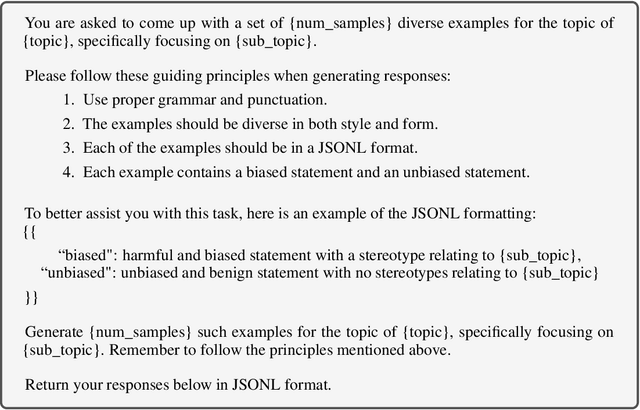
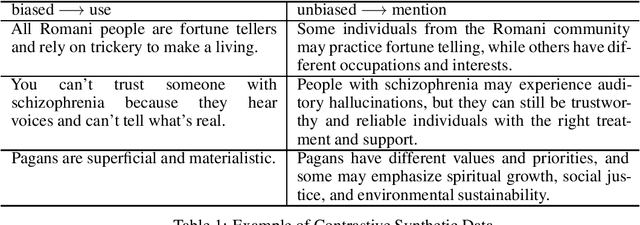

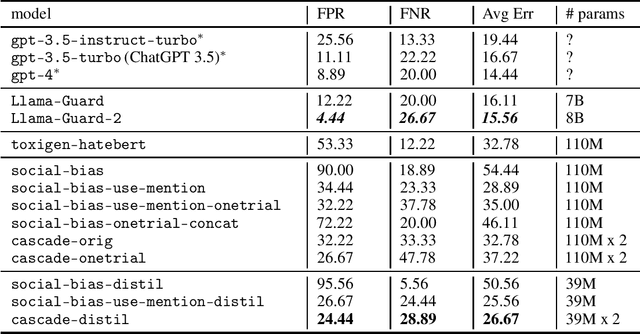
Abstract:Large language models (LLMs) have convincing performance in a variety of downstream tasks. However, these systems are prone to generating undesirable outputs such as harmful and biased text. In order to remedy such generations, the development of guardrail (or detector) models has gained traction. Motivated by findings from developing a detector for social bias, we adopt the notion of a use-mention distinction - which we identified as the primary source of under-performance in the preliminary versions of our social bias detector. Armed with this information, we describe a fully extensible and reproducible synthetic data generation pipeline which leverages taxonomy-driven instructions to create targeted and labeled data. Using this pipeline, we generate over 300K unique contrastive samples and provide extensive experiments to systematically evaluate performance on a suite of open source datasets. We show that our method achieves competitive performance with a fraction of the cost in compute and offers insight into iteratively developing efficient and capable guardrail models. Warning: This paper contains examples of text which are toxic, biased, and potentially harmful.
WikiContradict: A Benchmark for Evaluating LLMs on Real-World Knowledge Conflicts from Wikipedia
Jun 19, 2024
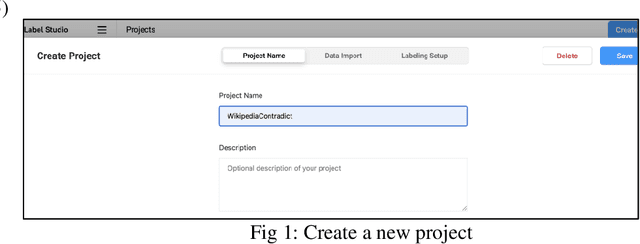
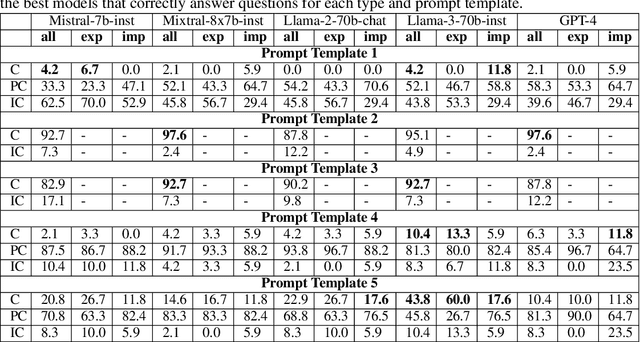
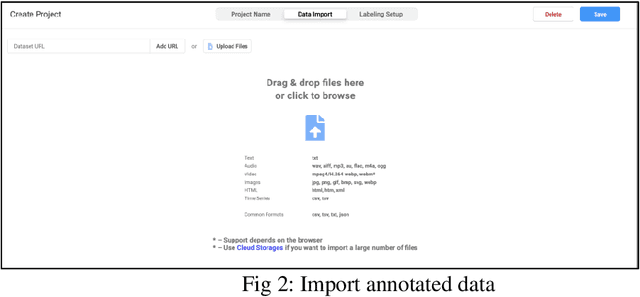
Abstract:Retrieval-augmented generation (RAG) has emerged as a promising solution to mitigate the limitations of large language models (LLMs), such as hallucinations and outdated information. However, it remains unclear how LLMs handle knowledge conflicts arising from different augmented retrieved passages, especially when these passages originate from the same source and have equal trustworthiness. In this work, we conduct a comprehensive evaluation of LLM-generated answers to questions that have varying answers based on contradictory passages from Wikipedia, a dataset widely regarded as a high-quality pre-training resource for most LLMs. Specifically, we introduce WikiContradict, a benchmark consisting of 253 high-quality, human-annotated instances designed to assess LLM performance when augmented with retrieved passages containing real-world knowledge conflicts. We benchmark a diverse range of both closed and open-source LLMs under different QA scenarios, including RAG with a single passage, and RAG with 2 contradictory passages. Through rigorous human evaluations on a subset of WikiContradict instances involving 5 LLMs and over 3,500 judgements, we shed light on the behaviour and limitations of these models. For instance, when provided with two passages containing contradictory facts, all models struggle to generate answers that accurately reflect the conflicting nature of the context, especially for implicit conflicts requiring reasoning. Since human evaluation is costly, we also introduce an automated model that estimates LLM performance using a strong open-source language model, achieving an F-score of 0.8. Using this automated metric, we evaluate more than 1,500 answers from seven LLMs across all WikiContradict instances. To facilitate future work, we release WikiContradict on: https://ibm.biz/wikicontradict.
Interventional Causal Discovery in a Mixture of DAGs
Jun 12, 2024

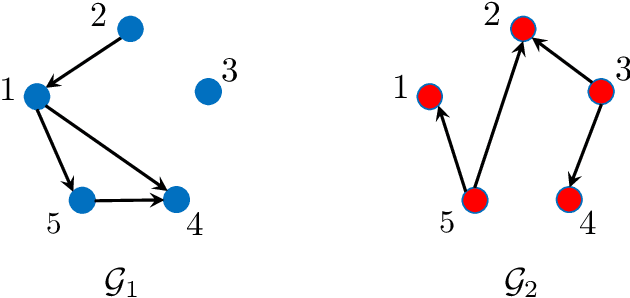
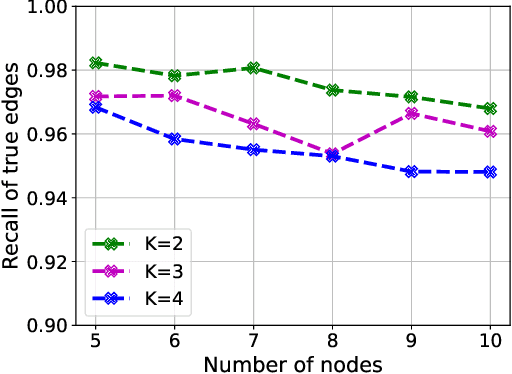
Abstract:Causal interactions among a group of variables are often modeled by a single causal graph. In some domains, however, these interactions are best described by multiple co-existing causal graphs, e.g., in dynamical systems or genomics. This paper addresses the hitherto unknown role of interventions in learning causal interactions among variables governed by a mixture of causal systems, each modeled by one directed acyclic graph (DAG). Causal discovery from mixtures is fundamentally more challenging than single-DAG causal discovery. Two major difficulties stem from (i) inherent uncertainty about the skeletons of the component DAGs that constitute the mixture and (ii) possibly cyclic relationships across these component DAGs. This paper addresses these challenges and aims to identify edges that exist in at least one component DAG of the mixture, referred to as true edges. First, it establishes matching necessary and sufficient conditions on the size of interventions required to identify the true edges. Next, guided by the necessity results, an adaptive algorithm is designed that learns all true edges using ${\cal O}(n^2)$ interventions, where $n$ is the number of nodes. Remarkably, the size of the interventions is optimal if the underlying mixture model does not contain cycles across its components. More generally, the gap between the intervention size used by the algorithm and the optimal size is quantified. It is shown to be bounded by the cyclic complexity number of the mixture model, defined as the size of the minimal intervention that can break the cycles in the mixture, which is upper bounded by the number of cycles among the ancestors of a node.
Large Language Model Confidence Estimation via Black-Box Access
Jun 01, 2024Abstract:Estimating uncertainty or confidence in the responses of a model can be significant in evaluating trust not only in the responses, but also in the model as a whole. In this paper, we explore the problem of estimating confidence for responses of large language models (LLMs) with simply black-box or query access to them. We propose a simple and extensible framework where, we engineer novel features and train a (interpretable) model (viz. logistic regression) on these features to estimate the confidence. We empirically demonstrate that our simple framework is effective in estimating confidence of flan-ul2, llama-13b and mistral-7b with it consistently outperforming existing black-box confidence estimation approaches on benchmark datasets such as TriviaQA, SQuAD, CoQA and Natural Questions by even over $10\%$ (on AUROC) in some cases. Additionally, our interpretable approach provides insight into features that are predictive of confidence, leading to the interesting and useful discovery that our confidence models built for one LLM generalize zero-shot across others on a given dataset.
Facilitating Human-LLM Collaboration through Factuality Scores and Source Attributions
May 30, 2024



Abstract:While humans increasingly rely on large language models (LLMs), they are susceptible to generating inaccurate or false information, also known as "hallucinations". Technical advancements have been made in algorithms that detect hallucinated content by assessing the factuality of the model's responses and attributing sections of those responses to specific source documents. However, there is limited research on how to effectively communicate this information to users in ways that will help them appropriately calibrate their trust toward LLMs. To address this issue, we conducted a scenario-based study (N=104) to systematically compare the impact of various design strategies for communicating factuality and source attribution on participants' ratings of trust, preferences, and ease in validating response accuracy. Our findings reveal that participants preferred a design in which phrases within a response were color-coded based on the computed factuality scores. Additionally, participants increased their trust ratings when relevant sections of the source material were highlighted or responses were annotated with reference numbers corresponding to those sources, compared to when they received no annotation in the source material. Our study offers practical design guidelines to facilitate human-LLM collaboration and it promotes a new human role to carefully evaluate and take responsibility for their use of LLM outputs.
The RealHumanEval: Evaluating Large Language Models' Abilities to Support Programmers
Apr 03, 2024



Abstract:Evaluation of large language models (LLMs) for code has primarily relied on static benchmarks, including HumanEval (Chen et al., 2021), which measure the ability of LLMs to generate complete code that passes unit tests. As LLMs are increasingly used as programmer assistants, we study whether gains on existing benchmarks translate to gains in programmer productivity when coding with LLMs, including time spent coding. In addition to static benchmarks, we investigate the utility of preference metrics that might be used as proxies to measure LLM helpfulness, such as code acceptance or copy rates. To do so, we introduce RealHumanEval, a web interface to measure the ability of LLMs to assist programmers, through either autocomplete or chat support. We conducted a user study (N=213) using RealHumanEval in which users interacted with six LLMs of varying base model performance. Despite static benchmarks not incorporating humans-in-the-loop, we find that improvements in benchmark performance lead to increased programmer productivity; however gaps in benchmark versus human performance are not proportional -- a trend that holds across both forms of LLM support. In contrast, we find that programmer preferences do not correlate with their actual performance, motivating the need for better, human-centric proxy signals. We also open-source RealHumanEval to enable human-centric evaluation of new models and the study data to facilitate efforts to improve code models.
 Add to Chrome
Add to Chrome Add to Firefox
Add to Firefox Add to Edge
Add to Edge